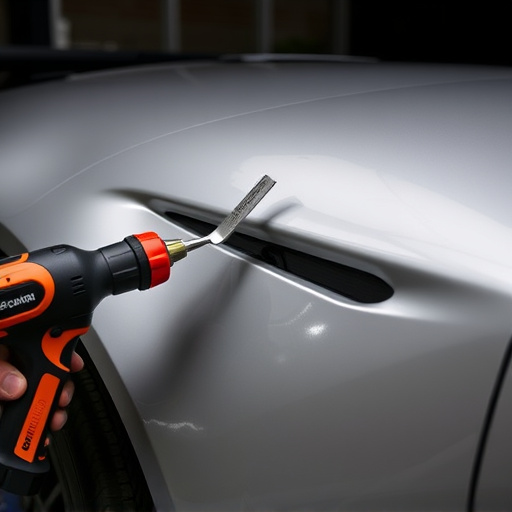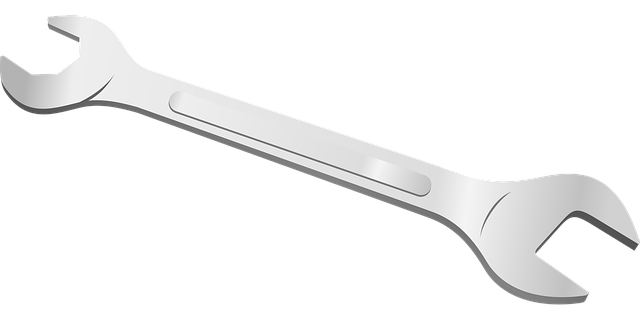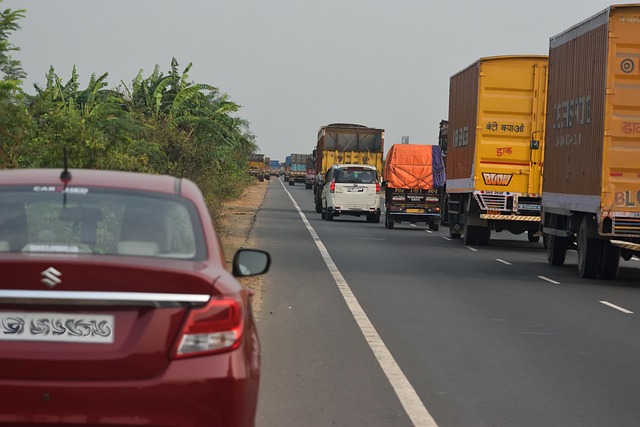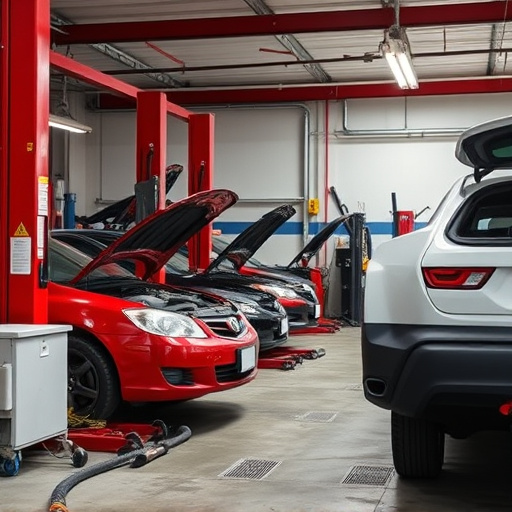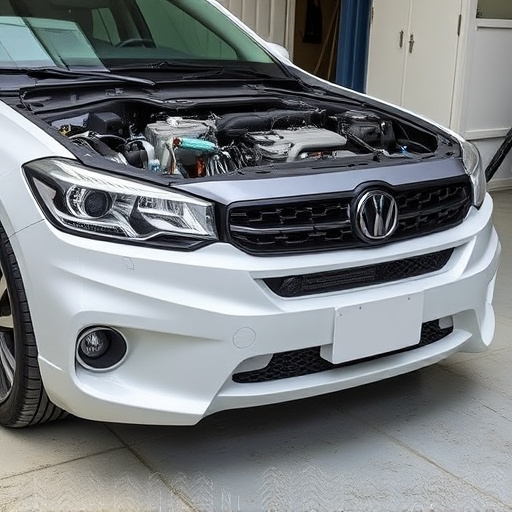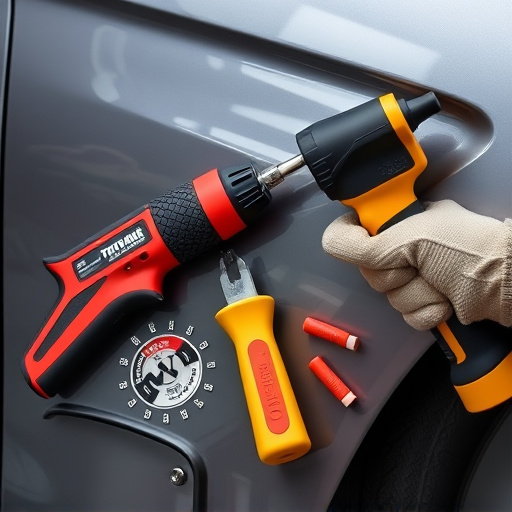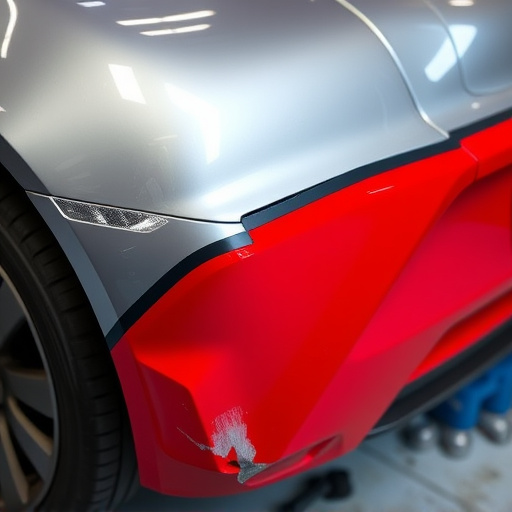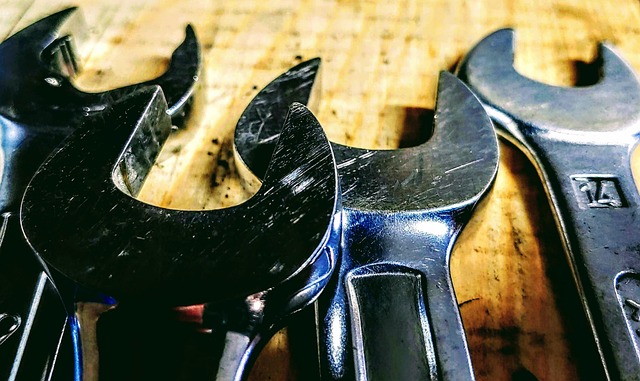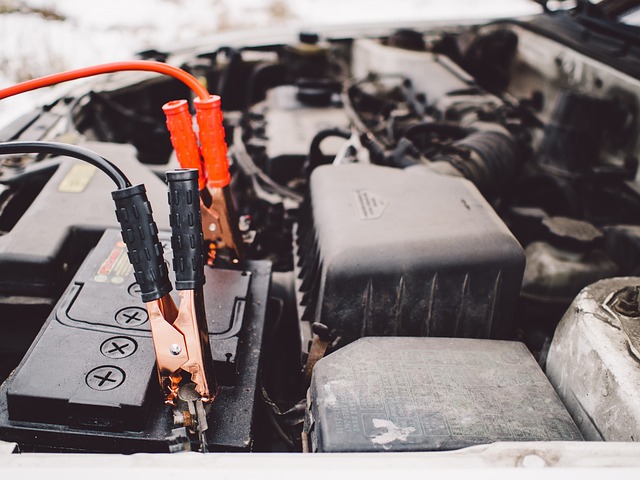Towing a vehicle to a collision center in extreme weather requires specialized equipment and safety measures to protect structural integrity. Experienced operators use snow chains and secure carriers, while proper securing techniques and specialized equipment inside the center ensure safe transport and efficient repairs. Best practices include all-weather tires, advanced navigation, prioritizing safety, regular maintenance, and clear communication for swift and satisfactory auto repair services.
In extreme weather conditions, towing a vehicle to a collision center becomes a delicate operation. This article explores the unique challenges posed by snowstorms, floods, and other harsh conditions, focusing on safe transportation and minimizing delays. We delve into essential safety measures, best practices for smooth towing, and strategies to navigate these difficult scenarios effectively. Understanding these tactics is crucial for both tow truck operators and collision center staff to ensure efficient vehicle transport during extreme weather events.
- Understanding the Challenges of Extreme Weather Towing
- Safety Measures for Smooth Collision Center Transport
- Best Practices to Minimize Delays in Harsh Conditions
Understanding the Challenges of Extreme Weather Towing

Towing a vehicle to a collision center during extreme weather conditions presents unique challenges that require careful consideration and specialized services. Heavy rain, snowstorms, or icy roads can make regular towing operations treacherous, increasing the risk of further damage to the vehicle and impeding safe transportation. The primary concern is ensuring the integrity of the vehicle’s structural integrity, especially in cases where collision damage repair or automotive restoration might be needed afterward.
Specialized towing equipment and techniques are often required to navigate these hazardous conditions effectively. For instance, snow chains and specialized carriers designed for extreme weather can prevent skids and ensure a secure transport. Moreover, experienced tow truck operators are trained to handle such situations, knowing how to minimize movement and protect the vehicle from further collision damage during the tow to the collision center, where automotive repair experts await.
Safety Measures for Smooth Collision Center Transport
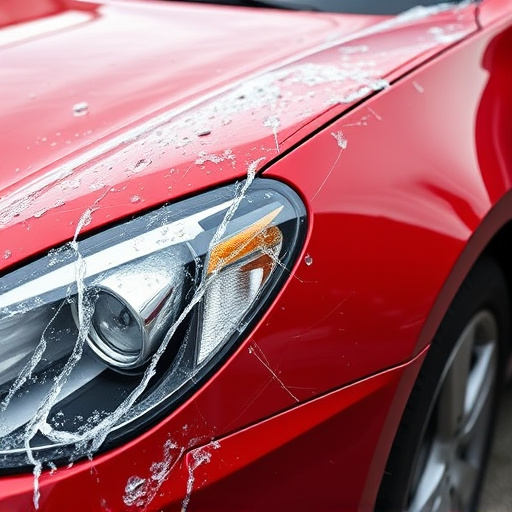
When towing a vehicle to a collision center during extreme weather conditions, safety should be the top priority. Drivers and tow truck operators must ensure proper securing of the vehicle to prevent shifting or dislodging during transport. This includes using sturdy straps, chains, or wheel chocks to secure all four wheels, especially on inclines or turns. Additionally, checking tire pressure and ensuring adequate traction can significantly improve safety, as slick roads are more prone to accidents.
Inside the collision center, proper handling of the towed vehicle is crucial for minimizing further damage. Auto repair shops equipped with specialized equipment, such as hydraulic lifts and secure storage areas, are ideal for handling cars safely. Skilled technicians should inspect the car’s bodywork for any loose parts or potential hazards before proceeding with repairs. This meticulous approach ensures that the vehicle not only reaches the collision center safely but also undergoes efficient and effective auto repair services, including scratch repair, to restore it to its pre-accident condition.
Best Practices to Minimize Delays in Harsh Conditions

In extreme weather conditions, minimizing delays during towing to a collision center is paramount for swift vehicle repairs and customer satisfaction. One best practice is ensuring your towing fleet is equipped with all-weather tires and advanced navigation systems to safely navigate through harsh conditions like snowstorms or heavy rain. Prioritizing safety over speed, drivers should take their time, maintaining a secure distance from other vehicles to avoid accidents on slick roads.
Regular maintenance checks before the onset of extreme weather are also crucial. This includes inspecting vehicle lights, wiper blades, and fluid levels. Additionally, having a clear communication strategy in place between your towing service and the collision center ensures seamless coordination, expediting the process further. Remember, effective planning and preparation can significantly reduce wait times, providing peace of mind to clients needing automotive repair services for their damaged cars, especially during dent repair or car bodywork emergencies.
In conclusion, navigating towing to collision centers during extreme weather conditions requires a comprehensive understanding of the unique challenges and implementation of safety measures. By adhering to best practices, such as utilizing well-maintained vehicles, employing trained personnel, and minimizing delays through proactive strategies, we can ensure smooth transport in even the harshest conditions. These steps are vital for maintaining efficiency and safety, ultimately fostering a more responsive and reliable system for collision center services.
